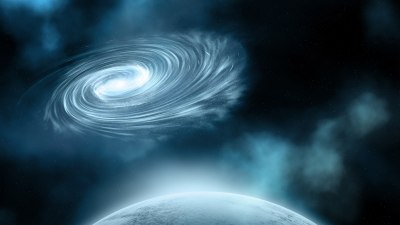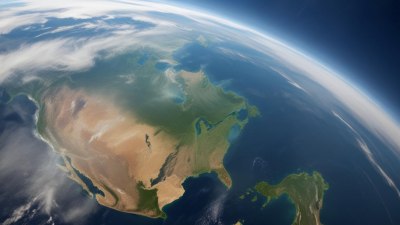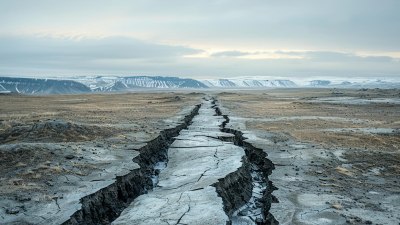How Space Weather Influences Storms on Earth
Explore the impact of space weather on Earth's storms and its consequences for our environment.

Image by kjpargeter on Freepik
Space weather refers to the environmental conditions in space, particularly the solar wind, solar flares, and geomagnetic storms that emanate from the sun. These phenomena can have profound effects not just on our satellites and astronauts, but also on Earth's atmospheric conditions, including storms.
Understanding the connection between space weather and Earth's storm systems is crucial for meteorologists, scientists, and the general public alike. While traditional meteorology focuses on atmospheric variables, incorporating space weather into this equation is essential for obtaining a complete understanding of our planet's weather systems. This article delves into the mechanisms by which space weather influences storms on Earth, provides examples of these interactions, and discusses implications for forecasting.
Understanding Space Weather
Space weather is predominantly driven by activity on the sun. The sun emits a steady stream of charged particles known as the solar wind. When solar flares or coronal mass ejections (CMEs) occur, they boost this flow of particles significantly, leading to enhanced solar wind events.
These charged particles can interact with Earth's magnetic field, causing geomagnetic storms. These storms can disrupt communication systems, damage satellites, and influence power grids. However, they also have a more subtle and less well-understood impact on Earth’s atmosphere, including storm systems.
The Sun-Earth Connection
The interactions between the sun and Earth are fundamental to understanding how space weather affects our planet. The Earth's magnetic field acts as a protective shield that deflects many of the charged particles in the solar wind. However, during significant solar events, these particles can penetrate the atmosphere, influencing various atmospheric phenomena.
The mechanisms behind these influences are still being researched, but there are several documented pathways through which solar activity can affect weather events on Earth. For example, variations in solar activity can affect the stratospheric circulation patterns, ultimately impacting storm development.
The Role of Cosmic Rays
Another important aspect of space weather is the role of cosmic rays, high-energy particles that flow into the Earth's atmosphere from outer space. These cosmic rays can also be influenced by solar activity. A peak in solar activity correlates with fewer cosmic rays reaching the Earth's surface.
Cosmic rays contribute to cloud formation by ionizing the atmosphere, promoting the condensation of water vapor into clouds. Consequently, decreased cosmic rays during high solar activity can lead to fewer clouds, ultimately influencing local and global weather patterns. This connection has significant implications, as it suggests that solar activity can modulate cloud cover and, by extension, rainfall and storm intensity.
Stratospheric Warming Events
One prominent example of space weather influencing storm activity on Earth can be observed during sudden stratospheric warming events. These events occur when strong disturbances in the polar vortex cause a rapid increase in temperature in the stratosphere, typically preceding major winter storms.
Research suggests that solar activity can trigger or enhance stratospheric warming events by altering the dynamics of the polar vortex. For instance, during periods of high solar activity, the polar vortex may become weakened or displaced, leading to increased snowfall and extreme winter weather patterns in mid-latitude regions.
Research Findings
Numerous studies have sought to establish a more robust link between space weather and terrestrial storm systems. One significant finding is the correlation between solar cycle activity and changes in cyclone systems. Researchers have identified patterns indicating that during periods of high solar activity, certain regions may experience more intense cyclones.
Additionally, tornado frequency has also been studied concerning solar activity. Although the data is less conclusive, some preliminary studies suggest a possible link between solar cycles and variations in tornado occurrences. This highlights the complex interrelationship between space weather and storm formation.
Impacts on Hurricane Formation
Hurricanes are among the most destructive storm systems on the planet. Emerging research suggests that space weather phenomena could affect hurricane development and intensity as well. For instance, the presence of abnormal heating in the upper atmosphere, potentially linked to solar activity, can influence atmospheric conditions conducive to hurricane formation.
During periods of high solar activity, changes in wind patterns can result in favorable conditions for hurricane development in the Atlantic. This connection is still being actively investigated, but it opens up new frontiers for understanding the intricate dance between solar activity and Earth's weather systems.
Future Implications for Weather Forecasting
The integration of space weather data into traditional meteorological models could revolutionize how we forecast storms. By understanding the interactions between solar activity and Earth's atmosphere, meteorologists can refine their predictions and offer more timely warnings about severe weather events.
With advancements in space observation technology, we are now better equipped to monitor solar activity and its potential impacts on Earth. Agencies like NASA and the U.S. National Oceanic and Atmospheric Administration (NOAA) are already collaborating to enhance the understanding of these phenomena, aiding in the development of predictive models that could one day incorporate a range of space weather variables.
The interplay between space weather and storms on Earth is complex and fascinating. As we deepen our understanding of the mechanisms involved, we can begin to appreciate the broader implications of solar activity on our weather systems. From hurricanes to winter storms, space weather holds the potential to inform and enhance our approach to forecasting.
Continued research and collaboration between meteorologists and space weather scientists will be critical in unlocking the complexities behind these interactions. By combining forces, the scientific community can improve our ability to anticipate severe weather events and mitigate their impacts on society, ultimately leading to better preparedness in the face of an ever-changing climate.











